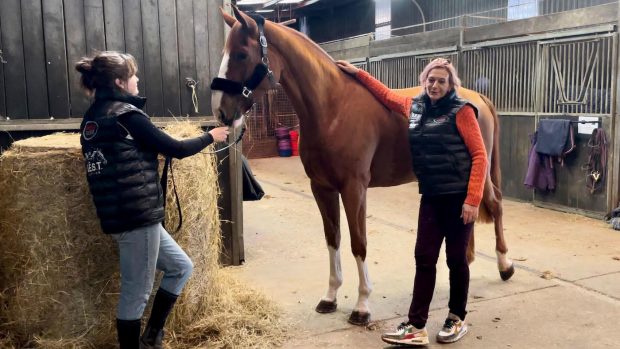Developmental orthopaedic disease (DOD) is an umbrella term for a number of related disorders that can affect a horse in its first 18 months of life.
Within the term there are a number of conditions; epiphysitis, wobbler syndrome, osteochondrosis (OCD) and acquired flexural deformities are the most common. The central issue surrounds the maturation of cartilage in to bone during growth.
The condition’s main effects are most often seen when the horse begins work, with signs of stiffness, long-term unsoundness and poor performance.
The increased tendency of DOD in fast-growing breeds, especially warmbloods and Throughbreds, suggests that in selecting for performance, a genetic fallibility has also been acquired.
However, it is not all in the genes, as something has to trigger an incidence of DOD. Common causes include overfeeding, dietary imbalance, excess activity on hard surfaces or trauma. Extra work put on one leg by lameness on an opposite leg can also cause DOD.
Sometimes something as subtle as a change in grass growth or forage quality can be enough to bring on epiphysitis. This is best handled by reducing the amount of energy fed to slow the rate of growth, usually by withdrawing from gazing on to a hay diet. Cutting out hard feed altogether is not recommended because this also cuts out all the amino acid, vitamins and minerals that these products contribute.
In foals, the first sign of OCD might be more time spent lying down or an inability to keep up with pals in the paddock. Usually there is non-painful swelling.
OCD occurs when cartilage doesn’t mature into bone properly, and research in to its cause is ongoing. The chief culprit is a forced fast growth rate, and other areas of research include the effects of large, single meals providing intermittent, bulk supplies of starch and calcium, and also trace element supplementation.
Top tips
- Check foals joints regularly from three months upwards
- To minimise the risk of DOD feed a high-fibre, low-starch diet with correct calcium to phosphorus ratios and high trace element levels
- If DOD is diagnosed don’t cut out all feed. Change the forage to hay and maintain critical nutrient supply using a concentrate or supplement
- Don’t go wild with calcium — more is not necessarily better. Keep within the 2:1 ratio
This article was originally published in Horse & Hound (4 September).
|
||
 |
||


 Get up to 19 issues FREE
Get up to 19 issues FREE TO SUBSCRIBE
TO SUBSCRIBE 


